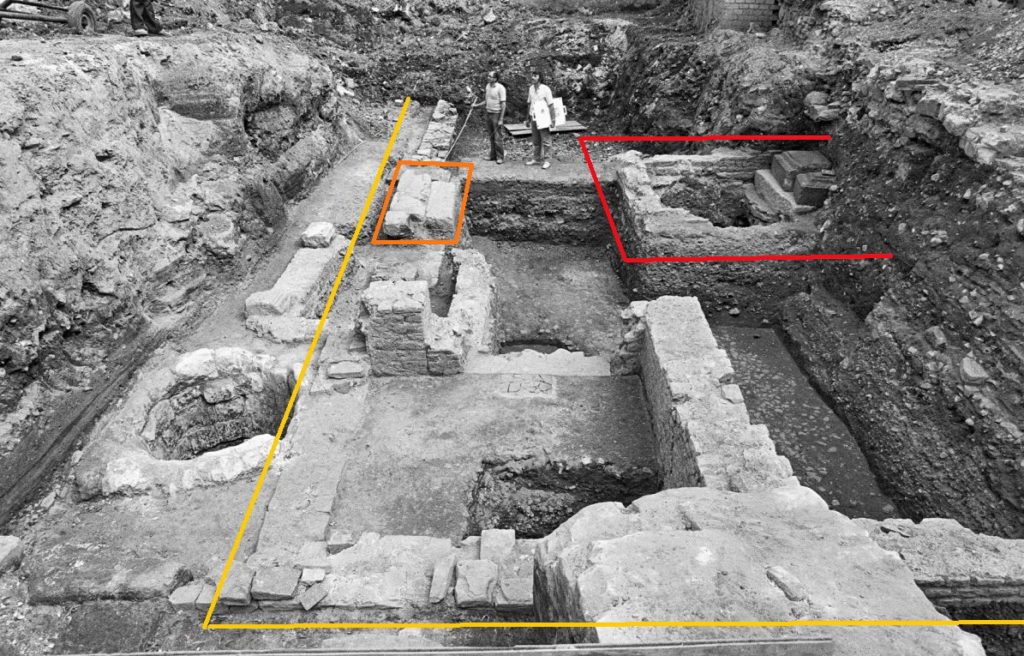
There may have always been a sanctuary in the environs of Traiectum ad Mosam. The Eburones, and native cultures before them, have left evidence of shrines at the site where two rivers join. The area where the Roman sanctuary to Jupiter was excavated was within view of the confluence of the Jeker with the Maas and might be a replacement for an older, sacred site of worship.
The site was excavated during the reconstruction of the Derlon Hotel in 1983. The Roman sanctuary dates to the beginning of the 2nd Century CE. It was situated on the Via Belgica, followed by the cemetery stretching away from the town. The 18-meter wide propylaea of the sanctuary faced North toward the road, with thick walls surrounding the building premises and another entrance to the West. A well was found just outside the sanctuary wall; however, whether the well was for practical or spiritual practice is uncertain.
The sanctuary featured a courtyard that contained a large column topped with a statue of Jupiter, built around fifty years after the construction of the building. It consisted of Belgian and French sourced stone in contrast to the local sandstone of the walls and it was surrounded by a stone enclosure. Although this column was found incomplete and in fragments, there was enough recovered to recreate the dimensions and appearance. It contained niches cut into its surface for the insetting of statues of local gods, and some statue fragments have been found in situ. God pillars were common structures throughout Germania Inferior, in particular, pillars dedicated to Jupiter.
Around the time of the construction of the god pillar, other renovations were undertaken. The flooring was replaced with pink Roman cement (opus signinum) resembling marble, and a small roofed interior chamber was added with the western entrance being blocked off to accommodate it. At this time, the Northern propylaea were richly embellished with sculpture, and a small shop was built behind the courtyard, perhaps for offering ritual supplies to devotees. The Southern end of the courtyard featured the temple building. This sacred space could only have held ten initiates at a time.

The sanctuary was in active use until the end of the Imperial Crisis late in the 3rd Century. The date of discontinued use coincides with the sacking of Traiectum ad Mosam by the Franks in 275. Shortly after, it was partially demolished, and a small chamber room was constructed using a portion of the Northern wall for its foundations. The purpose of this new building is unknown but might represent the continuity of religious practice as, during the Late Antique, this too would be demolished for a Christian church and, eventually, the Onze Lieve Basiliek.
Although there might be extended ruins of the sanctuary space under the Onze Lieve Basiliek, an excavation there has not been attempted. However, the excavated portion can now be viewed in the cellar of the newly-reconstructed Derlon Hotel.


